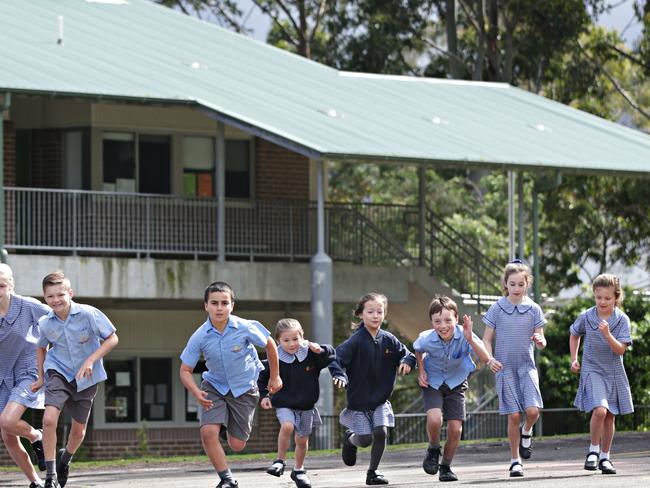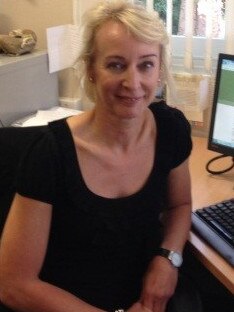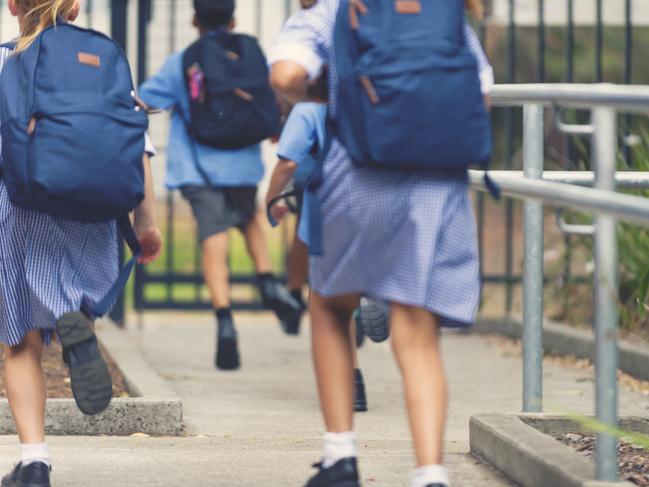COVID-19 back to school: Blueprint for NSW schools’ classroom return
A state government blueprint reveals how NSW public students will safely return to school. This includes detailed social distancing and hygiene measures such as banning parents from school grounds, keeping kids indoors while they eat and having cleaners sanitise between lessons. READ THE FULL DOCUMENT
NSW Coronavirus News
Don't miss out on the headlines from NSW Coronavirus News. Followed categories will be added to My News.
Schools will split classes, years and days as they prepare an incredible juggling act to allow all students to have one day a week back in the classroom.
The changes for all 2200 public schools will begin week three of the new term, starting May 11.
After initially telling principals numbers had to be capped at a quarter of the student body and class sizes could be no more than 10 students, the state government has now updated its suggested timetable.

The various “models for consideration to support school planning” allow siblings to attend school on the same day and pregnant, older or chronically ill teachers to stay home.
Principals have also planned detailed social distancing and hygiene measures such as banning parents from school grounds, keeping kids indoors while they eat so teachers can supervise handwashing and having cleaners sanitise water bubblers, door handles and computer keyboards between lessons.
MORE NEWS
‘Drop the gun’: How lone cop stopped gunman’s terror
Family feud: ‘Cass was obsessed with Karl and Jasmine’
At Lindfield East Public School on Sydney’s north shore, which is an example of a mid-sized primary school under the new government model, students in years one to four whose surnames start with letters from A to K will go to school on Mondays while those with surnames from L to Z will go to school on Wednesdays.
Students in years five and six whose surnames start with letters from A to K will go to school on Tuesdays while those with surnames from L to Z will go to school on Thursdays.
Kindergarten students will all attend school on Tuesdays and Thursdays in large conjoined classrooms with retracted wall dividers.
All 640 Lindfield East Public School students will learn from home on Fridays.
Face-to-face lessons will be devoted to teaching new concepts, which students can practise on the days they are at home.
“There will be at least one day a week of meaningful teaching, so when students are learning from home without ready access to teacher support they can complete tasks independently and consolidate their knowledge,” Lindfield East Public School principal Diane Read said.

“Kindergarten students will come two days a week because it’s difficult to teach kindergarten students at home, it requires much more intense parental support.”
Government guidelines state NSW primary students should spend half the week studying English and maths.
So the Lindfield East school day has been pared back to focus on literacy and numeracy and will only cover one other subject such as geography, history or PDHPE each day. Bright students can extend themselves while learning from home once they cover the basics.
Temporary teachers will cover classes for those teachers at increased risk of contracting coronavirus.
Students will eat lunch inside before going out to play, so teachers can watch them thoroughly wash their hands in wet areas between classrooms before and after eating.
Holroyd High School at Greystanes in Western Sydney is an example of a comprehensive high school, where HSC students will go to school every day and younger year groups will attend once a week.
To keep numbers down, students in years seven to nine will go to class between 8.40am and 12.30pm on their rostered day and senior students in years 10, 11 and 12 will go to school from 10am to 3pm.
Holroyd High School principal Kylie Adams thinks the split shifts will play to the students’ strengths as “seniors are not as awake in the mornings as they should be and juniors are not as switched on in the afternoons as they should be”.

The government has come under fire from the NSW Teachers Federation for giving private school students an edge in the HSC because private schools are running Year 12 classes every day instead of one day a week.
But public schools can bring HSC students in more often as long as they don’t overcrowd the school.
“Year 12 students feel vulnerable in regards to HSC because there has not been a lot of certainty or access to teachers face-to-face, which is really important,” principal Kylie Adams said.

“The feedback from our Year 12 students is they would prefer to be at school, which will be important to minimise their feelings of anxiety and vulnerability.”
According to Ms Adams, the split day model is scalable to suit increasing student attendance from just one day a week to full-time by term three.
Holroyd High School has a different timetable for its “specialist support classes” for students with intellectual disabilities, mental health disorders and autism spectrum disorder, who will go to school twice a week because they find it harder to learn independently at home.


All teachers in NSW who work at special schools or who teach specialist support classes for mentally disabled students will wear goggles, gloves and aprons during the school day.
Holroyd High School has already lent 300 laptops to students. They will be encouraged to bring the laptops to school so they don’t need to share keyboards with other students.
At Charlestown South Public School near Newcastle, which only has 256 students and sprawling grounds, social distancing will not be a problem under the principal’s plan to bring back half of all classes each day.
The hygiene measures at Charlestown South Public School will include dissuading parents from carpooling, bringing the school cleaner back twice during school hours in addition to thorough cleaning before and after school, and spreading students out during recess and lunch.
“The cleaner will come back twice during the day to wipe down all handrails leading to classrooms, computer keyboards, door handles, toilets, sinks and taps,” principal Colin Johnson said.

“There will be four tissue stations with bins around each classrooms, so students can sneeze or cough into a tissue, which they will throw away immediately.”
Charlestown South Public School will also consider staggered pick-up and drop-off times to reduce foot traffic at school gates.
Ten thousand forehead thermometers handed out to schools as part of the staggered return to classrooms will be kept in first aid kits to test the temperature of students who show symptoms of COVID-19 and will not be used to test the temperature of every child as they arrive at school.
‘WE WANT TO GO BACK TO SCHOOL’
The novelty of sleeping in and staying home has worn off for students who are anxious to get back to school.
New research has revealed three-quarters of students in year nine or older are worried learning from home will cripple their grades and there has been an alarming spike in students with mental health concerns.
Student research firm YouthInsight has found in the past month students who admit to harbouring concerns about their own mental health rose from close to one in three to one in two.
Six in every 10 students find learning form home more difficult than learning at school and two-thirds of students say they are less productive, according to the study of 500 young Australians.
Kellyville’s Hadya Aman, 17, no longer falls asleep until 2am, regularly feels sluggish, is distracted by her younger siblings also at home and has been plagued by poor internet connectivity that has complicated efforts to keep up with her cohort during live-streamed lessons.

The Macarthur Girls High School student briefly enjoyed sleeping in and not needing to commute to school but is now far more worried about whether her grades will be good enough for entry into a law degree at university next year.
“I recently moved house and our internet has a 30GB limit until we can get the NBN connected, which me and my two sisters use in a day while we are learning from home,” Hadya said.
“Most days during my classes I have to call the service provider to reset the data limit, which is a nightmare because I have to watch the classes back after school hours and I can’t ask questions.
“At school when I have free periods I usually go to the library and do solid work, but now I just sleep because I am up late most nights.
“HSC is normally stressful enough without all this uncertainty and to make things worse I am not grasping the concepts as well as I would if I was actually in class and could ask more questions.”
Hadya will be lent an internet dongle to use at home when school starts back this week.
Australia’s leading online youth mental health service, ReachOut, has launched a new COVID-19 study support hub to support the mental health and wellbeing of students.
According to ReachOut experts, school students should reward each hour of study with a FaceTime call with a friend or an online game, keep their rooms tidy, list three things they are grateful for each day, and tell themselves: “It’s understandable I’m feeling stressed, as this is an unusual situation to be in. What’s the best thing I can do right now to make me feel better?”

